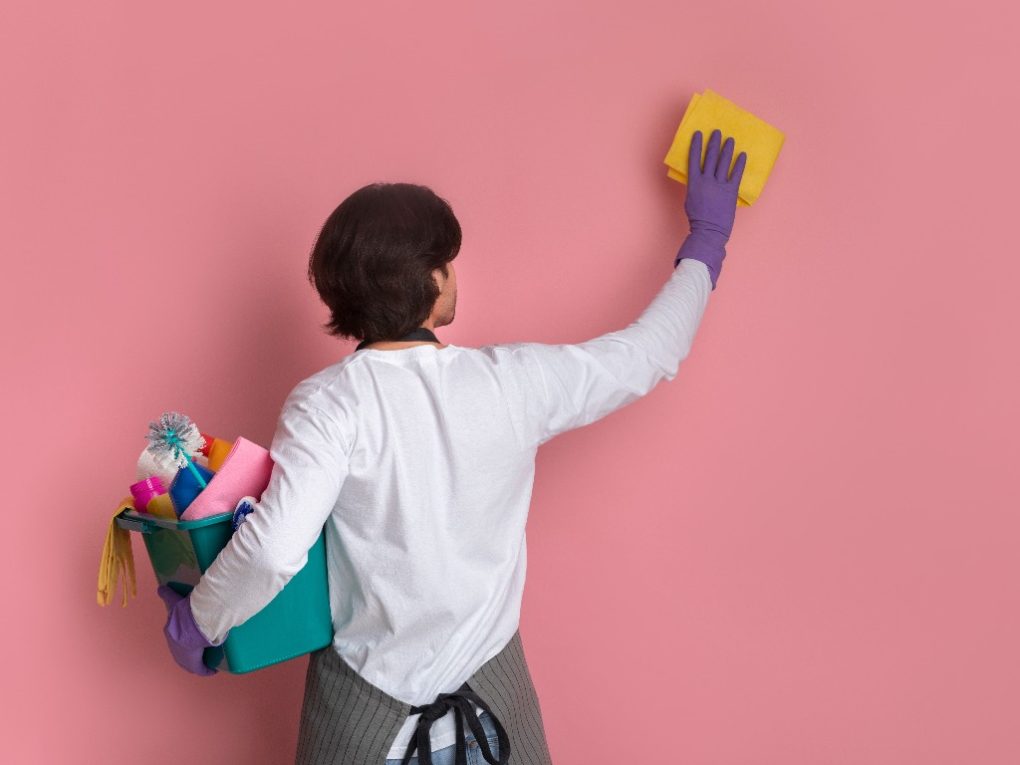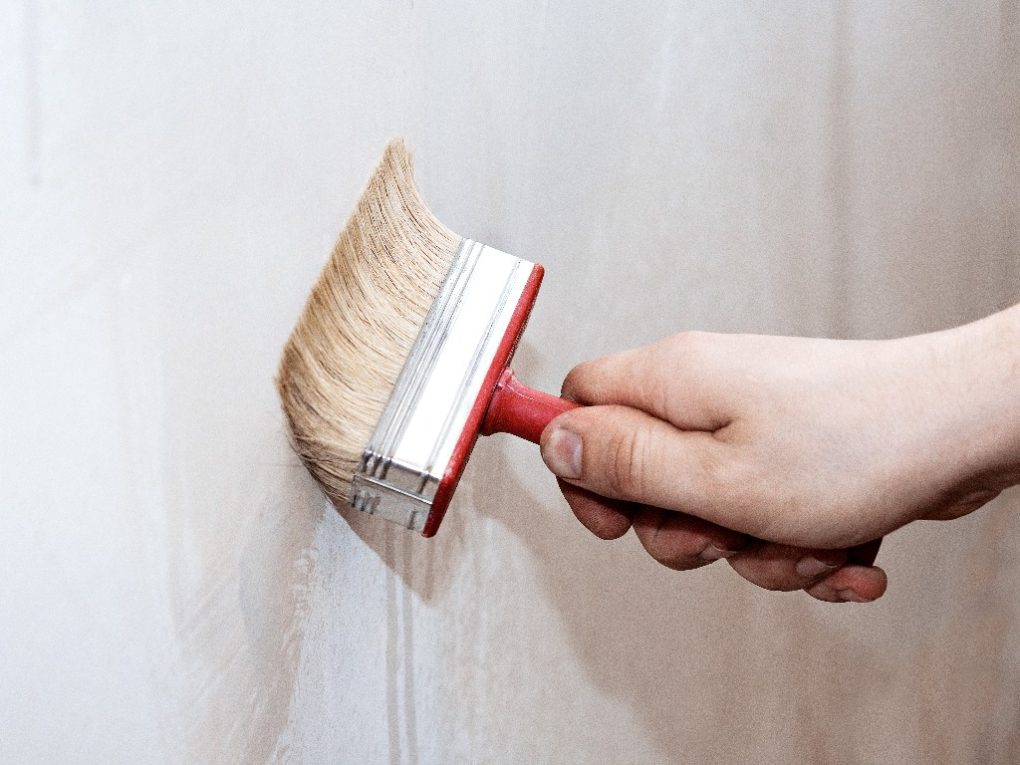Eggshell Paint: The Advantages and Disadvantages of Using This Paint
Eggshell paint is a type of finish with a low sheen and a slightly textured surface, similar to the surface of an eggshell. It is often used in areas where a little bit of shine is desired, but a high-gloss finish would be too much. Eggshell paint is a popular choice for interior walls and woodwork.


This type of paint is a versatile finish used in various spaces throughout the home. It works well in bedrooms, living rooms, hallways, home offices, and interior woodwork such as doors, trims, and skirting boards. It offers a durable surface that can be easily wiped clean with a soft cloth or sponge and water, making it a great choice for areas with a lot of traffic.
Advantages of Eggshell Paint
Durability
Eggshell paint is known for its ability to withstand wear and tear in high-traffic areas. It is more durable than flat or matte paints but less durable than semi-gloss or high-gloss paints. It can resist minor scratches, scuffs, and abrasions better than lower-sheen paints, making it suitable for areas with moderate activity, such as living rooms, hallways, and bedrooms.
This paint has a slightly glossy finish, making it easier to clean than flat or matte paints. It can withstand mild cleaning agents and gentle scrubbing without losing its sheen or color. This makes it ideal for areas prone to dirt, fingerprints, or smudges, such as kitchens, bathrooms, and children’s rooms.
Eggshell paint has moisture resistance, allowing it to withstand occasional splashes or mild humidity. However, it is not as moisture-resistant as semi-gloss or high-gloss paints, and prolonged exposure to moisture or water can cause it to blister or peel. It is not recommended for use in areas with high humidity, such as bathrooms or kitchens with heavy steam.
This paint also has moderate UV resistance, which means it can withstand exposure to sunlight without fading or yellowing as quickly as flat or matte paints. However, prolonged exposure to direct sunlight can still cause some fading or discoloration over time, especially in areas with intense sunlight.
Eggshell paint is known to have good longevity and can last several years without showing signs of wear or fading, especially in areas with low to moderate use. However, the durability of eggshell paint can be affected by factors such as the quality of paint, surface preparation, application technique, and environmental conditions.
Eggshell paint typically adheres well to a properly prepared surface, such as a clean, dry, and primed wall. Proper surface preparation, including cleaning, sanding, and priming, is essential for ensuring good adhesion and durability of eggshell paint. Poor surface preparation can lead to paint peeling or chipping, reducing durability.
Ease of Cleaning
Eggshell paint resists stains and smudges, making it a great choice for homes with children or pets. Most spills and marks can be easily wiped away with a damp cloth without leaving any residue or damage to the surface. This feature also makes eggshell paint ideal for kitchens, where spills and stains are common.


This paint can generally be cleaned with mild household cleanings agents, such as water, mild soap, or a mixture of water and vinegar. Harsh or abrasive cleaners, bleach, ammonia, or solvent-based cleaners should be avoided as they can damage the paint finish. It’s always best to follow the paint manufacturer’s cleaning recommendations for the specific brand and type of eggshell paint.
When cleaning eggshell paint, it’s important to use gentle cleaning techniques to avoid damaging the paint finish. A soft cloth or sponge should be used for wiping, and gentle, circular motions are recommended. Avoid excessive scrubbing, harsh abrasives, or excessive moisture, as they can cause the paint to dull or peel.
Aesthetics
Eggshell paint has a subtle sheen that adds a touch of elegance to any room. It is not as shiny as high-gloss paint but is more reflective than flat or matte paint. The slight sheen of eggshell paint helps to hide imperfections in the wall or surface, giving it a smooth and flawless appearance.
Additionally, eggshell paint is available in a wide range of colors, making it easy to match any decor style. Eggshell paint can enhance the depth and richness of paint colors, as the slight sheen reflects light differently on different wall areas. This can make paint colors appear more vibrant and dynamic, adding visual interest and dimension to walls.
Eggshell paint is versatile and can be used in various interior spaces, from living rooms, bedrooms, and hallways, to dining rooms and kitchens. Its subtle sheen and smooth finish can complement various design styles, ranging from traditional to contemporary. This type of paint can work well with different types of decor, furniture, and accessories.
Disadvantages of Eggshell Paint
Less Coverage
Eggshell paint is known to have lower coverage than other paint finishes, such as flat or matte paints, and has a slightly translucent quality, meaning the underlying surface can show through to some extent.
This can result in a lower coverage than paints with higher opacity, as the base color or surface imperfections may be visible through the paint film. For example, eggshell paint typically has a thinner consistency compared to other paint finishes, which can also result in lower coverage.
The paint may go on as thick or provide less hiding power, especially when covering dark or bold colors. Multiple coats may be needed to achieve the desired level of coverage. Also, eggshell paint can be absorbed by porous surfaces, such as drywall or unpainted wood, more readily compared to other paint finishes. This can result in lower coverage, as the paint may get absorbed into the surface rather than forming a solid paint film.


Proper surface preparation is crucial for achieving good coverage with eggshell paint. If the surface is not properly primed or prepared, it may absorb the paint unevenly or require more coats to achieve full coverage. However, uneven surfaces, such as patched areas or textured walls, may also affect the coverage of eggshell paint.
Not Suitable for High Traffic Areas
Another disadvantage of eggshell paint is that it is less durable than higher-gloss finishes, such as semi-gloss or gloss. This means it may hold up poorly in areas with a lot of moisture or humidity, such as bathrooms or kitchens.
In addition, eggshell finishes are more susceptible to scuffing and scratching, making nicks and damages more visible. This vulnerability is due to the hardness of the paint once it dries. Flat finishes are incredibly soft and susceptible to damage, while high gloss paints are the most durable.
High-traffic areas, such as hallways, staircases, or entryways, can be more prone to dirt, smudges, and spills, which may require more frequent cleaning. Eggshell paint may have a different level of stain resistance than satin or semi-gloss finishes, making it more challenging to clean and maintain in areas with heavy use.
